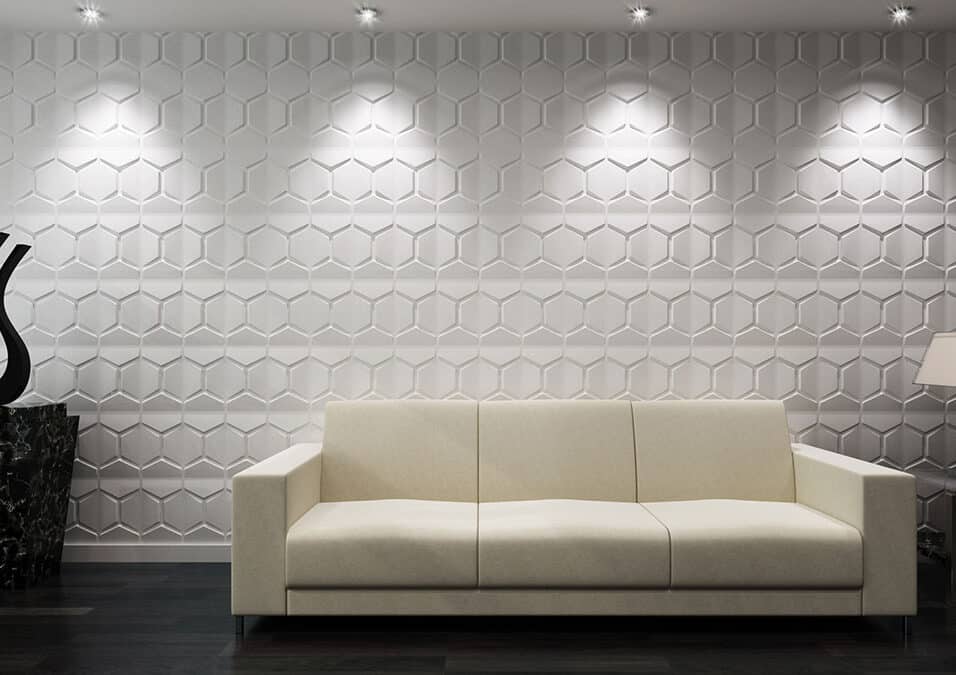How Often Should You Paint Interior Walls
Introduction
How Often Should You Paint Interior Walls: Painting the interior walls of your home is a great way to refresh the look and feel of your space. Whether you’re looking to update the color scheme or simply give your walls a fresh coat of paint, it’s important to consider how often you should be painting your interior walls. While there is no one-size-fits-all answer to this question, there are several factors to consider when determining the frequency of painting.
It’s important to consider the quality of the paint and the condition of your walls. High-quality paint can last longer and maintain its color and finish for a longer period of time. On the other hand, lower-quality paint may fade or chip more quickly, requiring more frequent touch-ups or repainting.
The amount of wear and tear your walls interior light experience can also impact how often you should paint. For example, high-traffic areas such as hallways or children’s rooms may require more frequent painting due to scuffs, stains, or general wear. Similarly, rooms with high humidity levels, such as bathrooms or kitchens, may require more frequent painting to prevent mold or mildew growth.
Personal preference and style trends can also influence how often you choose to paint your interior walls. If you enjoy staying up-to-date with the latest color trends or like to change the look of your space frequently, you may choose to paint more often. On the other hand, if you prefer a more timeless and neutral color scheme, you may be able to go longer between paint jobs.

How long does interior paint last on the wall?
Interior paint can significantly enhance the appearance of a room, giving it a fresh and vibrant look. However, over time, paint can start to deteriorate and lose its original appeal. The longevity of interior paint on the wall depends on various factors, including the quality of the paint, the surface it is applied to, and the conditions it is exposed to.
The quality of the paint plays a crucial role in determining how long it will last on the wall. High-quality paints are formulated to be more durable and resistant to fading, chipping, and peeling. They also tend to have better color retention, ensuring that the paint maintains its vibrancy for a longer period. On the other hand, lower-quality paints may start to show signs of wear and tear sooner.
The surface the paint is applied to also affects its longevity. Different surfaces require different types of paint, and using the wrong paint can lead to premature deterioration. For example, using interior paint on an exterior wall can result in the paint peeling or fading quickly due to exposure to harsh weather conditions.
The conditions the paint is exposed to
Can also impact its lifespan. Factors such as humidity, temperature fluctuations, and exposure to direct sunlight can all affect the durability of interior paint. High humidity levels can cause the paint to bubble or peel, while extreme temperature changes can lead to cracking or fading. Additionally, prolonged exposure to sunlight can cause the paint to fade over time.
Overall, while there is no exact timeframe for how long interior paint will last on the wall, using high-quality paint, applying it to the appropriate surface, and minimizing exposure to harsh conditions can help extend its lifespan. Regular maintenance, such as cleaning and touch-ups, can also help prolong the life of the paint and keep the walls looking fresh and vibrant for years to come.
How many times can you paint interior walls?
When it comes to painting interior walls, the frequency at which you can paint them depends on several factors. These factors include the quality of the paint, the condition of the walls, and the amount of wear and tear they experience.
The quality of the paint is an important factor to consider when determining how many times you can paint interior walls. High-quality paints are designed to last longer and provide better coverage, which means they can withstand more frequent painting. On the other hand, lower-quality paints may require more frequent touch-ups or repainting.
The condition of the walls also plays a role in how often you can paint them. In some cases, extensive repairs may be necessary, which can limit the number of times you can paint the walls.
The amount of wear and tear
That the walls experience is another factor to consider. High-traffic areas, such as hallways or children’s rooms, may require more frequent painting due to scuffs, stains, or other damage. Rooms that are used less frequently, such as guest bedrooms, may not need to be painted as often.
In conclusion, the number of times you can paint interior walls depends on the quality of the paint, the condition of the walls, and the amount of wear and tear they experience. High-quality paints and well-maintained walls can be painted more frequently, while lower-quality paints and damaged walls may require less frequent painting. It is important to assess these factors before deciding to paint your interior walls to ensure the best results and longevity of the paint job.
How often should ceilings be painted?
When it comes to painting ceilings, there is no one-size-fits-all answer to how often they should be painted. The frequency of painting a ceiling depends on various factors such as the type of paint used, the condition of the ceiling, and the level of wear and tear it experiences. However, a general guideline is to repaint ceilings every 5 to 10 years.
The type of paint used plays a significant role in determining how often a ceiling needs to be painted. Different types of paint have different durability levels, and some may last longer than others. For example, oil-based paints tend to be more durable and can withstand more wear and tear compared to water-based paints.
The condition of the ceiling is another important factor to consider. Regular maintenance and cleaning can help prolong the lifespan of a ceiling and reduce the need for frequent repainting.
The level of wear and tear
A ceiling experiences also affects the frequency of painting. Ceilings in high-traffic areas or rooms with high humidity levels, such as kitchens and bathrooms, may require more frequent repainting due to the increased likelihood of stains, moisture damage, and general wear.
The frequency of painting ceilings depends on factors such as the type of paint used, the condition of the ceiling, and the level of wear and tear it experiences. While a general guideline is to repaint ceilings every 5 to 10 years, it is important to assess the specific circumstances of each ceiling to determine the appropriate timing for repainting.
How many years does ceiling paint last?
Ceiling paint is specifically designed to withstand the test of time and maintain its appearance for many years. However, the lifespan of ceiling paint can vary depending on several factors, including the quality of the paint, the conditions in the room, and the level of maintenance.
The quality of the paint is one of the most important factors that determine how long ceiling paint will last. These paints often contain additives that enhance their longevity and performance. On the other hand, lower-quality paints may not hold up as well over time and may require more frequent touch-ups or repainting.
The conditions in the room
can also affect the lifespan of ceiling paint. Rooms with high humidity levels, such as bathrooms or kitchens, may experience more wear and tear on the paint due to moisture. Additionally, rooms with excessive heat or direct sunlight exposure can cause the paint to fade or deteriorate more quickly. Proper ventilation and temperature control can help extend the lifespan of ceiling paint in these conditions.
Maintenance plays a crucial role in the longevity of ceiling paint. Regular cleaning and dusting can help prevent the buildup of dirt, grime, and stains, which can degrade the paint over time. It is also important to address any issues, such as water leaks or cracks, promptly to prevent further damage to the paint. Regular inspections and touch-ups can help maintain the appearance and integrity of the ceiling paint.
The lifespan of ceiling paint can vary depending on factors such as the quality of the paint, the conditions in the room, and the level of maintenance. High-quality paint, proper room conditions, and regular maintenance can help extend the lifespan of ceiling paint and keep it looking fresh for many years.
How long does a painted ceiling last?
A painted ceiling can last for a significant amount of time, depending on various factors such as the quality of the paint used, the preparation of the surface, and the level of maintenance. Generally, a well-painted ceiling can last anywhere from 5 to 10 years before it may require repainting.
The quality of the paint used is a crucial factor in determining the lifespan of a painted ceiling.They also tend to have better color retention, ensuring that the ceiling maintains its appearance for a longer period of time. On the other hand, low-quality paints may deteriorate more quickly, resulting in the need for more frequent repainting.
The preparation of the surface before painting is also essential in ensuring the longevity of a painted ceiling. Proper surface preparation involves cleaning the ceiling to remove any dirt, dust, or grease, as well as repairing any cracks or imperfections. This allows the paint to adhere better to the surface and prevents premature peeling or flaking. Additionally, using a primer before applying the paint can further enhance its durability and lifespan.
Maintenance plays a significant role in extending the lifespan of a painted ceiling.
Regular cleaning and dusting can help prevent the buildup of dirt and grime, which can cause the paint to deteriorate over time. Avoiding excessive moisture or humidity in the room can also help prevent the growth of mold or mildew, which can damage the paint. Additionally, addressing any issues such as leaks or water damage promptly can prevent further damage to the ceiling paint.
The lifespan of a painted ceiling can vary depending on factors such as the quality of the paint, surface preparation, and maintenance. By using high-quality paint, properly preparing the surface, and maintaining the ceiling, it is possible to extend the lifespan of a painted ceiling and enjoy its aesthetic appeal for many years.
The recommended frequency for painting interior walls depends on several factors such as the type of paint used, the quality of the previous paint job, and the amount of wear and tear the walls experience.
Regularly repainting your interior walls not only helps maintain their appearance but also protects them from damage and extends their lifespan. Walls in high-traffic areas or rooms with high humidity levels may require more frequent repainting compared to less used spaces.
If you notice signs of peeling, cracking, or fading paint, it may be a good idea to repaint your interior walls sooner to prevent further damage and maintain a fresh and vibrant look.
How frequently should interior walls be repainted?
The recommended frequency for repainting interior walls depends on several factors such as the type of paint used, the quality of the previous paint job, and the amount of wear and tear the walls experience.
Regular repainting helps maintain the aesthetic appeal of your walls and keeps them looking fresh and vibrant. Over time, walls can accumulate dirt, stains, and scuff marks, which can make the paint appear dull and worn out. Repainting at regular intervals not only enhances the overall appearance of your space but also protects the walls from damage caused by moisture, sunlight, and other environmental factors.
It is important to note that certain areas of your home may require more frequent repainting. Additionally, if you notice any signs of paint deterioration such as peeling, cracking, or fading, it is advisable to repaint those areas as soon as possible to prevent further damage.
Is there a specific timeline for repainting interior walls?
When it comes to repainting interior walls, there is no one-size-fits-all timeline that can be applied to every situation. The frequency at which you should repaint your walls depends on several factors, including the type of paint used, the quality of the initial paint job, the amount of wear and tear the walls experience, and personal preference.
However, this is just a guideline and may vary depending on the specific circumstances. For example, high-traffic areas such as hallways, entryways, and children’s rooms may require more frequent repainting due to the increased likelihood of scuffs, stains, and general wear.
It is important to regularly inspect your walls for signs of wear and fading. If you notice any significant discoloration, peeling, or damage, it may be time to repaint. Additionally, if you are looking to change the color scheme or update the overall look of your space, repainting can be a great way to achieve a fresh and updated appearance.
What is the general rule of thumb for painting interior walls?
As a general rule, you should paint the walls inside your home every three to five years. This timeline can change, though, based on things like the quality of the paint used, how much wear and tear the walls get, and how good the walls are in general.
It’s more likely that these spots will get dirty, scratched, and show other signs of wear and tear, so they need a new coat of paint more often.
Paints of higher quality tend to last longer and can handle more wear and tear, so you can wait longer between painting.
How often do professionals suggest painting interior walls?
Most professionals say that you should paint the walls inside your home every three to five years. However, how often you paint depends on a number of things, including the type of paint you use, how often you clean your walls, and your own personal taste.
. Keeping the walls clean and free of dust is important to keep dirt and grime from building up and wearing away the paint faster. Taking care of problems like cracks or peeling paint as soon as they show up can also help stop more damage and the need to paint more often.

Conclusion
How often you paint the walls inside your home depends on a number of things. Some of these things are the quality of the paint, how much wear and tear the walls get, and personal taste. Usually, you should paint the inside of your home’s walls about every 5 to 7 years to keep them looking new. However, this timeline may be different for your home based on its unique circumstances.
Ultimately, the decision of how often to paint your house interior walls is a personal one. Some homeowners may prefer to repaint more frequently to keep up with current design trends or simply to enjoy a fresh and clean living space. Others may choose to wait longer between paint jobs to save time and money. It is important to consider your own preferences and priorities when determining the appropriate timeline for repainting.
There is no one right answer for how often you should paint the inside of your home’s walls, but it is usually best to do it every 5 to 7 years. This timeline can change, though, based on things like the paint’s quality, how much wear and tear it has, and your own personal taste. When you think about these things and check your walls often for signs of damage, you can make sure that the inside of your walls stay in good shape and look fresh and new.








